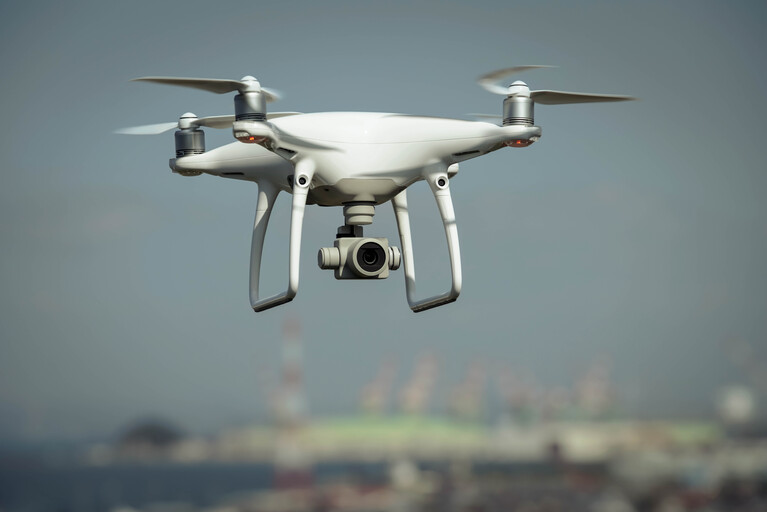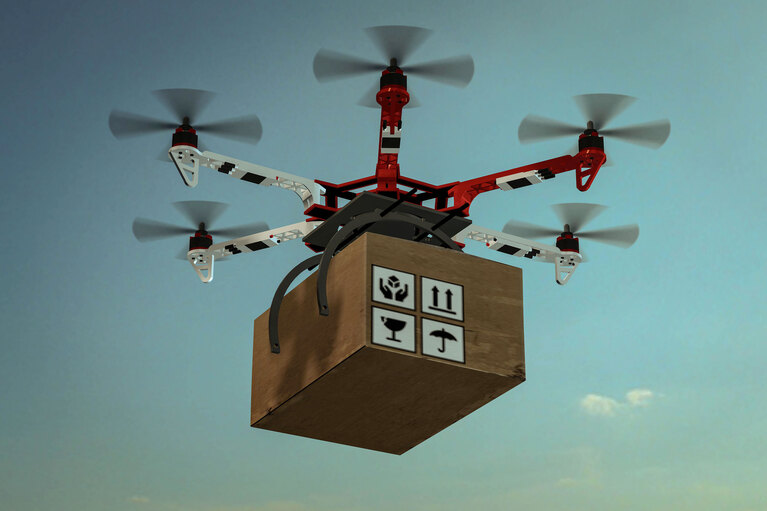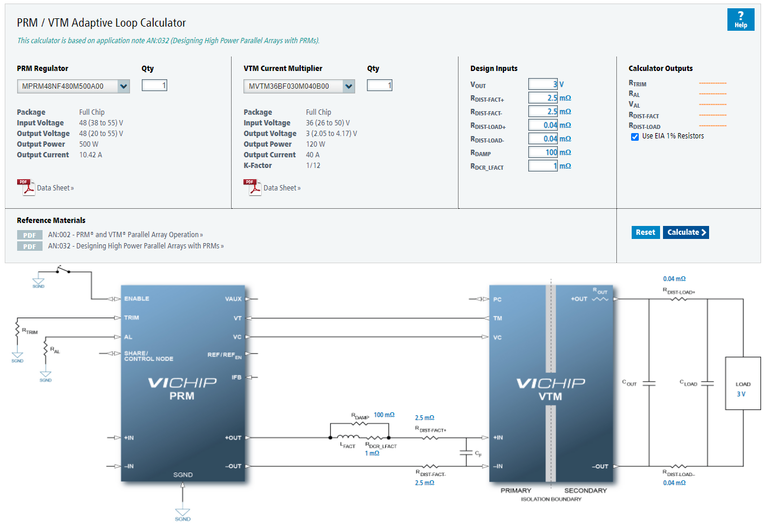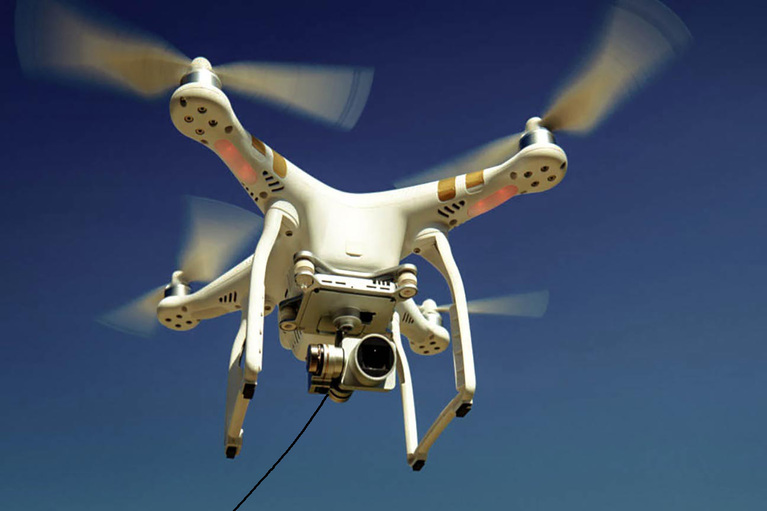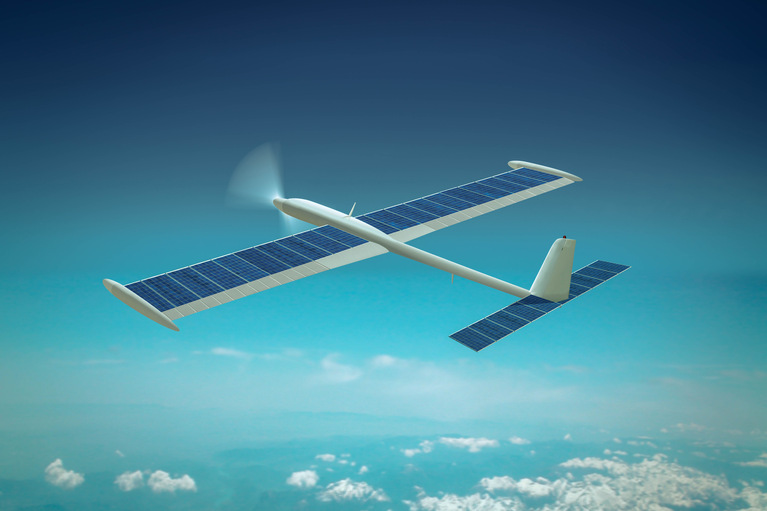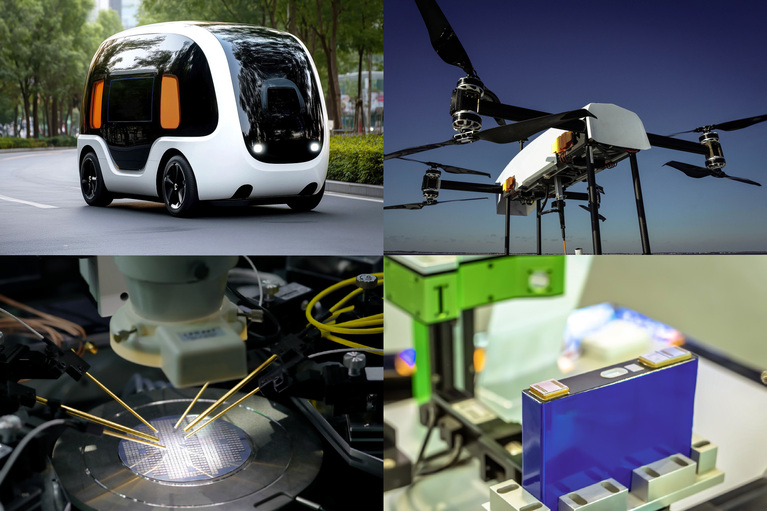
Accelerate your move to a high performance 48V power delivery network
This eBook provides guidance on designing 48V power delivery networks to enhance the performance, efficiency, and reliability of industrial products
Dear vicorpower.com users:
In an effort to improve the Vicor website, we will be conducting maintenance on the site Dec. 29th between 11:30 am and 2pm am EST.
Certain parts of the site may not be available during this time, specifically product pages and family matrices.
We apologize for any inconvenience and thank you for your patience.
– Vicor Web Team
Q & A with David Berry,
Vicor Principal Applications Engineer
Today’s Unmanned Aerial Vehicles (UAVs) are playing a greater role in our daily lives. From package delivery to aerial surveillance, UAVs are being deployed in greater numbers with greater responsibilities globally. As a result, UAV technology is evolving rapidly to meet the growing demand for more features and enhanced capabilities. This includes additional sensors, cameras and communication devices which all require power. Traditional UAV power systems lack the power density and efficiency to meet the needs of this new class of UAV. We sat down with Vicor FAE Dave Berry to understand how optimized power delivery networks (PDN), based on modular power products, help to improve efficiency, reliability and reduce weight and size, enabling extended range and flight times while freeing up space for larger payloads and functionality.
The key challenge we see facing engineers today is the demand for smaller, lighter-weight designs that deliver higher power. Increasingly, UAVs are carrying larger payloads, increasing flight times and handling more advanced communications and sensing. These evolving requirements place greater demands on power solutions to be smaller, lighter and quieter. Compact modules free up space for payloads such as enhanced and complex electronics including sensors, cameras, tools with communications and control. Lightweight modules enable increased flight time. And integrated modules using low-noise topologies reduce EMI that would otherwise impact remote operation, sensor accuracy, image quality and rapid data transmission. Vicor solves these challenges through next-generation power modules that deliver higher density and higher efficiency than other DC-DC converters.
Figure 1: Increasingly, UAVs are carrying larger payloads, increasing flight times, and handling more advanced communications and sensing. These evolving requirements place greater demands on power solutions to be smaller, lighter, and quieter.
We currently have a variety of products that address the demands of UAV applications with either low-voltage or high-voltage DC input modules. The DCM™ DC-DC Converter Module product family offers significant improvement over competitive DC-DC converter solutions. In addition, further power density can be achieved with the PRM™ Regulator, a high-performance buck-boost regulator. The PRM creates an intermediate bus of 24 – 48V with 96 – 98% efficiency to power servos and additional downstream power modules, including the fixed-ratio NBM™ Non-Isolated Bus Converter Module, ZVS Buck and ZVS Buck-Boost Regulators. These modules can also be paralleled for higher-power conversion.
Typically each product has specific attributes and the design goal of the engineer will dictate which product(s) provide the overwhelming advantage. Because our products are compact and designed with thermally-adept packaging, most are ideally suited for many UAV applications, including surveillance, communications, search-and-rescue and payload delivery. Some of these applications are tethered or employ wiring harnesses for power delivery.
Vicor has products with very high input voltages (BCM®) for tethered applications. Other applications are powered by batteries (DCM™), making power conversion efficiency — along with size/weight — critical. A power module design approach easily addresses challenges presented by load capacity, placement and user functionality requirements. To support easy power design development, Vicor offers an online tool, the Power System Designer, to aid in selecting the appropriate product(s) to optimize your power delivery network.

Figure 2: To optimize the payload runtime and overall system performance it is best to run high voltage over a thinner tether to the top then convert down to the loads. The Vicor fixed ratio converter, BCM, Bus Converter Module, transforms voltage down to the appropriate bus voltage in the UAV.
Yes, we offer valuable tools online for simulations and assistance using thermal management and component calculators. In addition, we are offer demo boards and our applications engineers are available to assist with design reviews.
Figure 3: The PRM/VTM Adaptive Loop Calculator, shown above, is one of several design calculators available online at www.vicorpower.com/Vicor-tools/calculators. Each calculator features and easy-to-use graphical user interface helping to enhance the user experience.
Standard product samples can be ordered from Digi-Key, Mouser and Arrow, plus solutions for UAV systems can be discussed thoroughly with our Applications Engineering team www.vicorpower.com/contact-us.
It would be difficult to achieve the power density and efficiency of Vicor modules without our intellectual property. We achieve high power density, efficiency and thermal management through proprietary topologies and packaging. Additionally, we achieve high quality and reliability through disciplined, automated manufacturing that also utilizes proprietary capabilities.
Read more on how Vicor powers UAVs for Greater UAV flight time, range and payload.
Dave Berry has a BS in Electrical Engineering from Union College in Schenectady, NY. He was a former magnetics designer specializing in impedance matching transformers, and now works for Vicor Corporation as a Principal Applications Engineer. He has been working in component power design for 23 years.
David Berry, Principal Applications Engineer
UAV solutions: Increasing payload capability and flight times of commercial UAVs
White paper: DCM for tethered UAV applications
Accelerate your move to a high performance 48V power delivery network
This eBook provides guidance on designing 48V power delivery networks to enhance the performance, efficiency, and reliability of industrial products
Build better UAVs using modular power
Power Delivery Networks (PDN) based on Vicor high performance power modules enable innovative designs for the next generation of UAV development
UAV Market Trends and Power System Seminar 2025 Taipei, Taiwan
Power modules enable top performance and innovation for today’s advanced UAVs
High-efficiency, high-density modules free up space for advanced communications and extend range
High-efficiency class of UAV depend on solar power to meet its long flight time requirements
